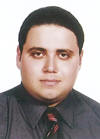December 2008
![]()
AutomatedBuildings.com
[an error occurred while processing this directive]
(Click Message to Learn More)
December 2008 |
[an error occurred while processing this directive] |
 EMAIL
INTERVIEW
Mostafa Shahto &
Manny
Mandrusiak, CD, Director of OPC Marketing, Matrikon
EMAIL
INTERVIEW
Mostafa Shahto &
Manny
Mandrusiak, CD, Director of OPC Marketing, Matrikon
Mostafa Shahto Systems Integration Engineer, Siemens Security Solution, Dubai, UAE.
Mostafa graduated from the American University of Beirut in 2007 and joined Siemens Security Solutions in Dubai as Systems Integration Engineer. He has worked on several projects in the Lower Gulf Region integrating new products and extending the functionality of Siemens Security Platforms.
OPC in the UAE
OPC technology is becoming a standard and is allowing for increased flexibility in integrating and customizing solutions locally.
|
|
|
|
|
|
|
|
|
|
|
|
|
|
|
|
|
|
|
|
|
[an error occurred while processing this directive] |
Mandrusiak: What is your experience with OPC?
Shahto: I started working with OPC in 2007. My work focuses on creating OPC gateways for products that don't support OPC natively. Examples of my projects include OPC DA to OPC A&E gateways, and XML and MSSQL to OPC A&E gateways.
Mandrusiak: Given the unique market of the Middle East, how does OPC technology provide an advantage for building automation professionals?
Shahto: The market has many unique properties, and using technologies from different regions of the world in each project, with each region adopting a different set of standards creates compatibility issues. Furthermore, using products from different manufacturers in our solutions adds to this complexity.
In each project, a unique set of products and solutions are used, and therefore a unique customization is required for each project. This creates a huge overhead in terms of time and cost for customizing solutions locally in the Middle East.
The only solution for this problem is adopting a standard across the industry. As the popularity of OPC increases, OPC technology is becoming a standard and is allowing for increased flexibility in integrating and customizing solutions locally.
Mandrusiak: Can OPC and existing building automation protocols integrate into existing buildings in the Middle East?
Shahto: The strength of OPC derives from being designed with the automation industry in mind. Backward compatibility is critical in automation especially in system extension or upgrade.
As these dated protocols become obsolete, we will have greater numbers of solutions that support both these protocols and OPC. This will undoubtedly add flexibility for extending existing systems.
Mandrusiak: What are the biggest challenges that the Middle East faces in the vertical of Building Automation?
Shahto: The challenges are the same as in other regions, but the big number of medium and large scale projects and the complexity thereof is being a driving force for the industry. These challenges allow for innovative and mature solutions to stand out among others.
Mandrusiak: How are you using OPC today in your solutions to decrease costs, and implement projects faster?
Shahto: The major factor in our success is providing solutions to projects with minimal overhead while maintaining maximum stability. OPC technology covers those two areas, as the technology is robust and mature, and the Client-Server architecture of the technology is perfect for our solutions.
Mandrusiak: What challenges do you face when connecting different vendor protocols together on complex solutions?
Shahto: Response Time is extremely critical as our systems operate in real-time. As the number of protocols increases in a solution, especially in a single subsystem, the processing time and communication costs increase drastically. The challenge is finding the optimal combination of hardware and software to overcome any bottlenecks in the system.
Another issue is proprietary protocols that require additional hardware or software before being able to connect to other systems. This introduces more points of failure and delay in the system.
[an error occurred while processing this directive] Mandrusiak: How could OPC security play a role in securing building automation systems from unauthorized users?
Shahto: Traditionally separate systems are converging together at accelerated rates, as an increasing number of systems and subsystems are interacting and communicating together for added functionality. This raises many concerns with regards to security gaps in the system, where unauthorized access is one of the greatest threats.
The OPC Security generally, and DCOM security more specifically, adds stability and security to the technology and makes it more reliable, although this aspect of OPC still requires further maturity.
Organizations like MatrikonOPC have products, like MatrikonOPC Security Gateway, which enable users to have complete control over their system security. Security Gateway can be configured to provide tag level security, and customize read and write functions. For Building Automation, this provides great benefits as systems can be configured to allow third parties to access only specified sections with proper permissions. Buildings systems and subsystems can be secured with one easy to install OPC compliant product.
Mandrusiak: What is the most interesting way you have used OPC to solve a problem?
Shahto: We have implemented a Guard Tour system in one of our projects where the security guards are equipped with mobile tag readers with embedded SIM cards. The readers send tag information and distress call requests to special servers in the control room over the Mobile Network Operator's Network.
We have developed an application that filters the messages, cross references them with the access rights in the database, and when an invalid tag is detected, an OPC A&E Alarm message is sent to the Security Station and the control room operators are notified immediately. Such a solution illustrates how powerful OPC can be for extending system functionality.
[an error occurred while processing this directive]
[Click Banner To Learn More]
[Home Page] [The Automator] [About] [Subscribe ] [Contact Us]